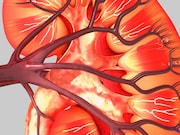Use of provider report, medication possession ratio improved ID of nonadherence in youth with CKD
MONDAY, Jan. 7, 2019 (HealthDay News) — An approach involving a combination of provider report and pharmacy refill data can improve identification of medication nonadherence among youth with chronic kidney disease (CKD), according to a study published in the January issue of Pediatric Nephrology.
Cozumel S. Pruette, M.D., from Johns Hopkins University in Baltimore, and colleagues examined whether using additional measures improves the accuracy of identification of nonadherence beyond provider assessment alone. A total of 87 adolescents and young adults (AYAs; age 11 to 19 years) with CKD, their caregivers, and 17 medical providers were recruited for the multisite study. Provider report, AYA report, caregiver report, electronic medication monitoring (MEMS), and pharmacy refill data (medication possession ratio [MPR]) were obtained as adherence measures.
The researchers found that concordance was poor to fair (kappas, 0.12 to 0.54); depending on the measure, 35 to 61 percent of AYAs were classified as nonadherent. Both providers and MEMS classified 35 percent of AYAs as nonadherent, but there was poor agreement between the measures on identifying which AYAs were nonadherent, with sensitivity and specificity of 0.57 and 0.77, respectively. The highest sensitivity for identifying nonadherence (0.90) and negative predictive power (0.88) resulted from combining provider report with MPR <75 percent.
“These findings provide evidence to support the need to incorporate a multimethod assessment approach into clinical care to identify nonadherence in patients with chronic kidney disease, an essential first step in designing and implementing successful interventions to improve medication adherence and patient outcomes,” the authors write.
Copyright © 2019 HealthDay. All rights reserved.








